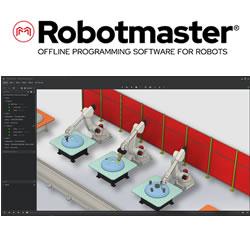Todays applications require their sensors feedback in much quicker intervals. The faster the response, the faster the production or through put of work, which results in a low cost per unit or operation.
Inductive Linear Sensors
Marty Cwach
Tell us a little bit about TURCK.
TURCK creates products that collect, connect and communicate data that controls automation. We engineer an expanded offering of standard and custom sensors, connectors and cordsets, full-range industrial Ethernet, high-performance RFID and rugged IP67-rated networking solutions to integrate and bridge gaps within the dissimilar technologies of real-world process and factory automation architecture.
Who are your customers and give us an idea what they are using your products for?
Our customers use our products to automate their processes and increase their productivity. We pride ourselves that our customers are not buying individual products but are really buying the expertise we offer and the support we give to help them develop the optimal automation solution for their specific needs. We see ourselves as not a provider of only products to our customers, but a partner to make our customers’ solutions exceptional.
Why did TURCK develop the high-speed SSI Q25 inductive linear sensor?
TURCK developed this high-speed version in response to our customers and their need for a linear sensor for motion control. Press Release:
What are the product’s specifications?
TURCK’s high-speed SSI Q25 inductive linear sensor stands out from similar sensors on the market because of its 5 kHz update rate. The update rate is a true speed, regardless of acceleration; competitor models often cite a 10 kHz update rate, but this is via a prediction mode. In other words, TURCK’s sensor takes into account variations in acceleration to maintain the same 5 kHz update rate, whereas the competition can’t look at these variations. Here’s one example:
Some competitors output data every 100 microseconds, but this is better only when the velocity is constant, as their internal processing time for position is still only 1 kHz (1,000 microseconds). If the application changes speed, the competitors’ solution will be 5 times slower to output the desired position value. This prohibits customers from knowing in real time the application’s status, while TURCK’s sensor reliably updates position data consistently at 5 kHz.
Other specifications:
- Provides up to 1 µm resolution
- Accurate measuring speeds of 5 meters per second
- 25 bit, gray coded SSI communication
- SSI clock rate can be adjusted from 62.5 kHz to 1 MHz
- 29mm blind zone on each end
- EMI/RFI noise interference
- IP67 Rated
- Temperature range of -25 to 70°C
.jpg)
The new Q25 inductive linear sensor from TURCK enables real time monitoring and measuring, resulting in more precise control than previously available in other linear measurement systems. Photo courtesy TURCK.
How does the new high-speed SSI Q25 inductive linear sensor differ from others in TURCK’s Q-track inductive sensors line?
The original SSI versions were like our competition in that we had a 1 kHz update rate. We saw that the market required position data much faster. The new version offers a 5 kHz update rate and a much faster internal processing time.
Why was faster response time a priority for TURCK in this product?
Today’s applications require their sensor’s feedback in much quicker intervals. The faster the response, the faster the production or through put of work, which results in a low cost per unit or operation.
What are the Q25’s applications in robotics?
We have had success with units used on AGVs (automatic guided vehicles) and their need for hydraulic cylinder linear position feedback.
What have you seen as far as growth in the AGV market over the last few years?
The move toward automation has been steadily adopted over time. The AGV market has grown exponentially as its whole basis of existence is automation. Many end users are more demanding of the capabilities of the system – most importantly, the speed and accuracy at which they perform.
Look into your crystal ball. Where do you see TURCK products and the Robotics industry 5 years from now?
I see the robotics industry, like TURCK, on the leading edge of technology and system integration. The solutions available will need to continue to be more efficient, in terms of speed and accuracy, and more compact.

About TURCK Sensor Group
TURCK products collect, connect and communicate data that controls automation. With more than 3,200 people working in 27 countries, TURCK has built global partnerships with customers based on engineering expertise, flexibility, and our willingness to take on engineering challenges that others won’t. Industries worldwide rely on our highest-quality products to integrate and bridge gaps within the dissimilar technologies of real-world process and factory automation architecture. We engineer an expanded offering of standard and custom sensors, connectors and cordsets, full-range industrial Ethernet, high-performance RFID and rugged IP67-rated networking solutions - all backed by global accessibility and unmatched application expertise..
About Marty Cwach
Marty Cwach has served as a Product Manager for the TURCK Sensor Group for the past three years. He provides expertise in position and measurement sensing technologies.
The content & opinions in this article are the author’s and do not necessarily represent the views of RoboticsTomorrow
Comments (0)
This post does not have any comments. Be the first to leave a comment below.
Featured Product


